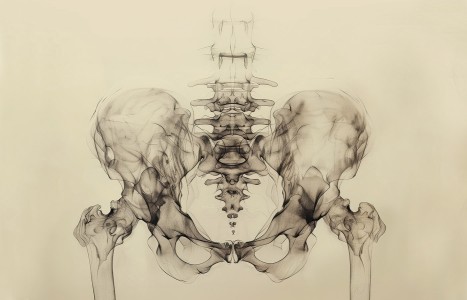People today want convenience, whether it be from their bank, credit card, favorite retail store, or restaurant. They demand it from the companies who hold their loyalty, including their health care providers (you). They don’t want to call and possibly be put on hold, and they want to use an app or schedule an appointment on your website. Here are three reasons your practice can gain by switching to online appointment scheduling.
Dui Yao and Ayurveda: Combining Medicinals
The art of combining medicinals to accelerate the effects of healing is a common practice in Traditional Chinese Medicine referred to as Dui Yao. In this article, let's examine the two-herb combination of the Ayurvedic herbs Guduchi (Tinospora Cordifolia) and Manjishtha (Rubia Cordifolia), and explore how this combo can be added to TCM formulas for more effective clinical results.
Ayurvedic Herbs
Guduchi is one of the most prominent herbs in the traditional Ayurvedic Materia Medica due to its extremely diverse range of actions: reduces burning sensations, reduces fevers, targets toxins, alleviates gout and arthritis, increases appetite, and acts as a tonic. These are just some of the most common actions of Guduchi; in TCM logic, it can be seen to clear heat of all kinds: depressive, toxic, vacuity heat and damp heat.
In Ayurvedic diagnostic schematics, Guduchi targets the plasma, blood, muscle, fat, nerve and reproductive system, covering an astonishing amount of somatic territory for a single medicinal. Its unique therapeutic actions center upon its ability to rejuvenate while detoxifying, which is why it is able to have such broad systemic effects.
Manjistha is very similar to Guduchi in its ability to offer a large array of clinical actions for a single medicinal. Some of the most common traditional actions of Manjishta are: moving and cooling the blood, clearing fever, targeting toxins, reducing accumulations, eliminating itching, preventing and stopping bleeding, relieving pain and mending bones. It also benefits the uterine tissues.
In light of all these actions, it's quite logical to ascertain how Manjistha can be an excellent addition to TCM formulas, which target chronic blood stasis and gynecological issues such as amenorrhea, dysmenorrhea and endometriosis.
Combining With TCM Formulas
When these two medicinals are combined with TCM formulas, a vast amount of clinical presentations can be addressed. Since we are limited in space I will pick three basic TCM formulas and examine how Guduchi and Manjishta can be added in order to maximize and support the actions of the TCM formulas.
The three formulas are Jia Wei Xiao Yao Wan, Si Miao San, Er Zhi Wan, Gui Zi Fu Ling Wan and Liu Wei Di Huang Wan. These three TCM formulas are excellent examples of integrating the art of Dui Yao and each one has unique actions that often complement one another in chronic, recalcitrant cases.
The first TCM formula is the popular Jian Wei Xiao Yao Wan, which is Xiao Yao Wan with the two herb combo of Mu Dan Pi and Zhi Zi added. This formula harmonizes the Liver and Spleen and clears depressive heat. The combo of Guduchi / Manjistha is an excellent addition to boost the heat-clearing actions without damaging the Spleen, while at the same time coursing the blood to prevent blood stasis, which may exist concomitantly with Liver Depression. This formula combo is an excellent option for gynecological conditions which fit the pattern of Liver/Spleen disharmony with depressive heat, as Manjistha helps guide the herbs to the uterine tissues.
The fomula Si Miao San is a standard formula for Damp Heat lodged in the lower Jiao. In conditions of lower back and leg pain coupled with clear signs of damp heat, the addition of Guduchi/Manjistha helps to assist in the heat-clearing and damp-draining actions, as well as courses the blood to prevent and or target blood stasis, which is a common pattern in cases of chronic pain such as arthritis, gout and joint inflammation.
The gentle nature of Guduchi/Manjistha will not injure the Spleen, which must be fortified in cases of damp heat. If signs of Spleen Qi vacuity are strong one can increase the dose of Yi Yi Ren as needed. This formula modification is also highly effective in cases of chronic vaginal discharge or bed sores on the lower legs.
The formula Er Zhi Wan is a wonderful two-herb formula that targets Kidney / Liver yin vacuity and is higher adaptive due to its elegantly simple action. Adding Guduchi/Manjistha to Er Zhi Wan effectively targets vacuity issues with the Kidney / Liver viscus, as well as gently clearing vacuity heat. This simple four-herb modification can also be added to other yin-supplementing formulas to increase supplementation without causing stagnation issues.
Formulas such as Shi Quan Da Bu Tang and Liu Wei Di Huang Wan can easily be modified by adding this four-herb combo to greatly boost actions without causing any complications, and the combo of Guduchi/Manjistha will also target issues of Blood stasis, which is often an underlying pattern in chronic, recalcitrant conditions.
The formula Gui Zhi Fu Ling Wan is a formula traditionally used for Blood stasis in the uterus during pregnancy. However, today it is most commonly used in conditions of blood stasis in the lower Jiao and most often avoided during pregnancy due to its blood-moving actions. This formula is highly effective in gynecology cases such as amenorrhea, uterine masses, distension and pain during menses with clotting, as well as prostatitis and benign prostatic hyperplasia. By adding Guduchi/Manjistha, the formula can also have a stronger action of clearing heat and moving blood, which is especially important in acute and chronic cases of infection of the prostate or urinary tract.
The final formula is Zhi Bai Di Huang Wan, which is the classic formula Liu Wei Di Huang Wan with the two herb combo of Zhi Mu/Huang Bai added. This formula is commonly used in cases of Liver/Kidney Yin vacuity with vacuity heat. Adding Guduchi/Manjistha greatly enhances the ability of the formula to clear vacuity heat, and will also gently supplement. If blood stasis is also a contributing factor, the dose of Manjistha and Mu Dan Pi can be increased as needed.
It is not possible to discuss all the possible options for integrating the two-herb Ayurvedic combo of Guduchi/Manjistha in this short article. However, hopefully this short discussion stimulates your interest to dive into more traditional formulas, and to seek unique and simple ways to modify and customize based upon the needs of the patient's disease expression. This contributes to the constant evolution of Traditional Chinese Medicine and allows practitioners to see the true art of herbal alchemy, rather than blindly administering formulas without considering the inherent flexible nature of Chinese medicine. I hope this inspires clinicians to also see the potential of integrating the systems of Ayurveda and Traditional Chinese Medicine in simple, yet highly advantageous ways.


